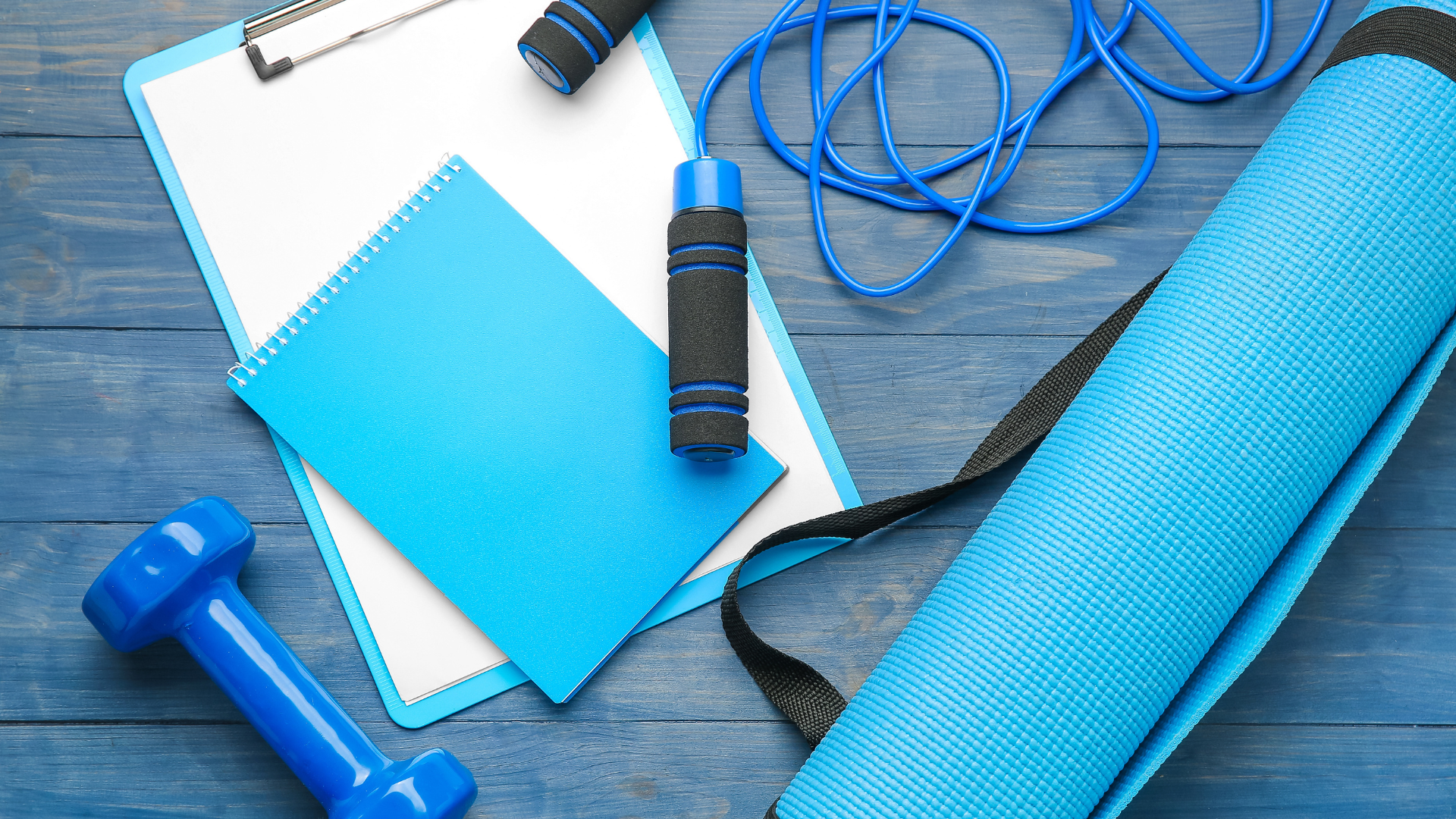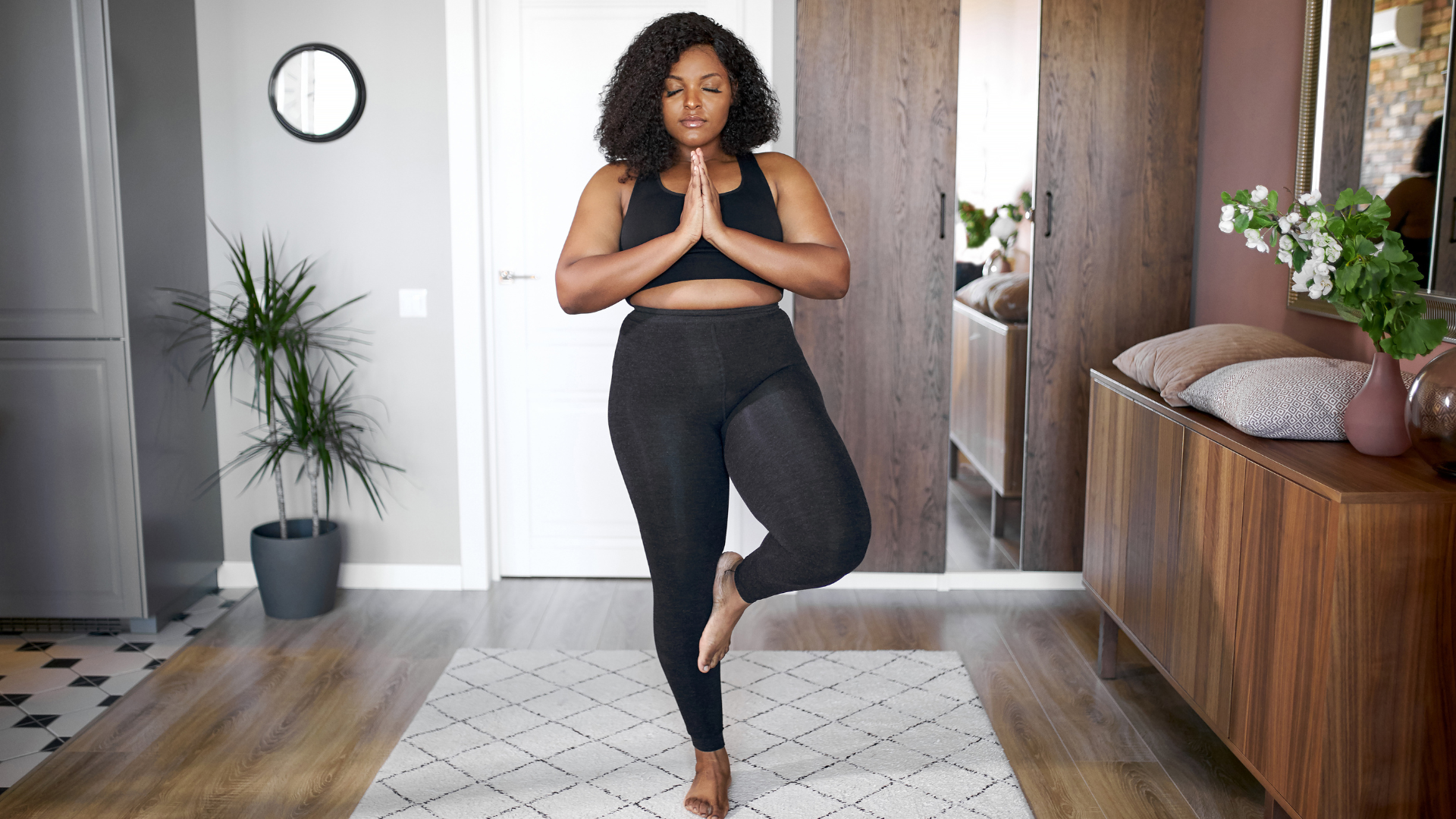View basket (0 items $0.00)

Yoga With Weights for Healthy Aging
As the birthdays roll by, from your early 30s, your muscles start to lose strength and mass. In general, it is a loss of just under one percent per year until your 60s, when the loss accelerates a little quicker for women. The percentage may not sound like a big deal, but by the time you’re 80, that could mean up to 50 percent of your total muscle mass lost. Just in case that’s not enough to convince you to try yoga with weights, let’s look at why muscle mass and strength are important. Then we’ll explore how to practice with weights.

4 Reasons Why Muscle Mass Matters
Muscles and Movement
Obviously, our skeletal muscles are essential to moving our bodies, so less muscle mass and strength means less ability to move. It’s not just about our ability to move on a yoga mat, but for daily tasks too. It’s important for our independence as we age to be able to stand up from a chair, walk, carry groceries, cook, get up off the floor, and other general daily things we take for granted when we’re young.
Muscles and Balance
We may also take our balance for granted, not realizing how often we need it in daily life for simple things like walking or dodging around furniture. So sure, maintaining muscle mass and strength helps our balance for yoga. But it’s also important for living and preventing falls. While most falls may just lead to the odd bruise, scratch, or simple embarrassment, as we age, falling becomes a bigger issue due to decreasing bone density. Less chance of falling means less chance of debilitating injury and fractures. 
Muscles and Bones
The potential for fractures, whether from falls or other causes, drops with maintained muscles. The contraction of muscles puts good stress on the bones helping to improve bone density and strength. While we know a regular yoga practice can help with bone density, yoga with weights supercharges the process. Building and using muscles to keep bones strong and healthy becomes even more necessary, particularly for women, as bone density naturally declines with aging. A woman’s peak bone density occurs in her late 20s, declines steadily over the years, then speeds up at menopause unless you work on it. Practicing yoga with weights is one way to boost those bones.
Muscles and Metabolism
It’s not just all about aging, either. Our skeletal muscles are high-energy burners. According to Lawrence Davis, author of Body Physics: Motion to Metabolism, at rest, muscles account for 18 percent of the body’s energy usage, even more during exercise. Maintaining our muscles helps to keep our metabolism efficient, burning and generating energy. Efficient metabolism also has links to maintaining our individual healthy weight and keeping us energized for life and yoga.
Yoga With Weights
While a strong yoga practice with Plank Pose (Dandasana) and Four-Limbed Staff Pose (Chaturanga Dandasana) is great for bodyweight strength training, it’s not quite enough to keep those age-related declines at bay. The National Strength and Conditioning Association say, “resistance training is a powerful intervention to combat the loss of muscle strength and muscle mass, physiological vulnerability, and their debilitating consequences.” Resistance training is any training that makes your muscles work against a weight or force. Of course, it’s possible to continue your usual yoga practice and simply add weight training sessions into your schedule. It’s also possible to do both at the same time. 
Yoga With Hand Weights
Imagine many of the common yoga poses like Warrior II Pose (Virabhadrasana II). Then picture the extra challenge on the arm and shoulder muscles if you held a one, or two-pound weight in each hand. Adding just a small weight to your yoga practice, at least to begin with, will work to build the muscles. You don’t have to practice with weights in every yoga pose you practice. You can simply add weights to poses where it makes sense. This could include the Warrior Poses (Virabhadrasana), Triangle Pose (Utthita Trikonasana), Side Angle Pose (Utthita Parsvakonasana), and more. If hand weights feel a little too intrusive, perhaps try wrist weights. Then you can still keep the flow through vinyasa while adding in the weight training.
Yoga With Ankle Weights
The lower body muscles need training and building even more than the upper body. Fortunately, ankle weights work well for this. While yoga poses such as Chair Pose (Utkatasana) and the warrior poses work the legs and butt muscles, adding ankle weights can turn many other yoga poses, including inversion poses, into leg-strengthening poses. Even balancing yoga poses such as Tree Pose (Vrksasana) with ankle weights can help build muscle and bone.
Yoga With Weights for Extra Flexibility
As well as boosting muscle mass and strength, yoga with weights also develops mobility by using active stretching. Active stretching is when one muscle group is engaged to create relaxation and stretch in opposing muscles. In the standing balance pose, Extended Hand-to-Big-Toe Pose (Utthita Hasta Padangusthasana), if you release the fingers and use the hip flexors to lift the leg rather than the hand pulling, this is using active stretching for the hamstrings. Active stretching has been shown to create more flexibility and functional mobility than static stretching.
Where to Go for Yoga With Weights
There are schools of yoga designed around yoga with weights and muscle building. These styles of yoga are specifically for weight training with yoga, and you can search for a studio or teacher near you. You can also create your own weighted yoga class. Just add hand or wrist weights and ankle weights to your usual practice. It doesn’t have to be every yoga practice. Start small; aim to incorporate weights into your yoga practice at least once a week.
Later in life, it’s never too late to begin adding weights—even light weights—to your yoga practice. Studies show that weight training and physical activity preserve muscle mass and strength. Even after the age of 75, you can still preserve muscle strength. Whether you attend a specifically designed weighted yoga class or do it yourself, yoga with weights can give you the benefit of a strong and resilient body at every age.

 Erin Bourne (RYT500, YACEP) is a yoga teacher and yoga teacher trainer based in Seventeen Seventy (yes, the real town name) in Australia. She also teaches Pilates and other movement modalities; having come to yoga from an Exercise Science and education background, she is obsessed with learning and sharing about the body and movement. Erin shares her experience and knowledge through regular classes, teacher trainings, online courses, and writing. Her course offerings include 3D Anatomy and Resistance Yoga. Her writing includes the book A Yogi’s Guide to Fascia and numerous print and online published articles. You can find Erin’s creations through her website http://www.erinlbourne.com.
Erin Bourne (RYT500, YACEP) is a yoga teacher and yoga teacher trainer based in Seventeen Seventy (yes, the real town name) in Australia. She also teaches Pilates and other movement modalities; having come to yoga from an Exercise Science and education background, she is obsessed with learning and sharing about the body and movement. Erin shares her experience and knowledge through regular classes, teacher trainings, online courses, and writing. Her course offerings include 3D Anatomy and Resistance Yoga. Her writing includes the book A Yogi’s Guide to Fascia and numerous print and online published articles. You can find Erin’s creations through her website http://www.erinlbourne.com.
Studies referenced:
1. https://journals.lww.com/md-journal/fulltext/2016/05310/Higher_Daily_Physical_Activities_Continue_to.33.aspx
2. https://www.hindawi.com/journals/jar/2012/158279/
4. https://journals.lww.com/cjsportsmed/Abstract/2010/01000/
5. Comparison_of_Active_Stretching_Technique_and.2.aspx
6. https://openoregon.pressbooks.pub/bodyphysics/chapter/human-metabolism/
7. https://journals.lww.com/nsca-jscr/Fulltext/2019/08000/Resistance_Training_for_Older_Adults__Position.1.aspxSome
Featured Courses








